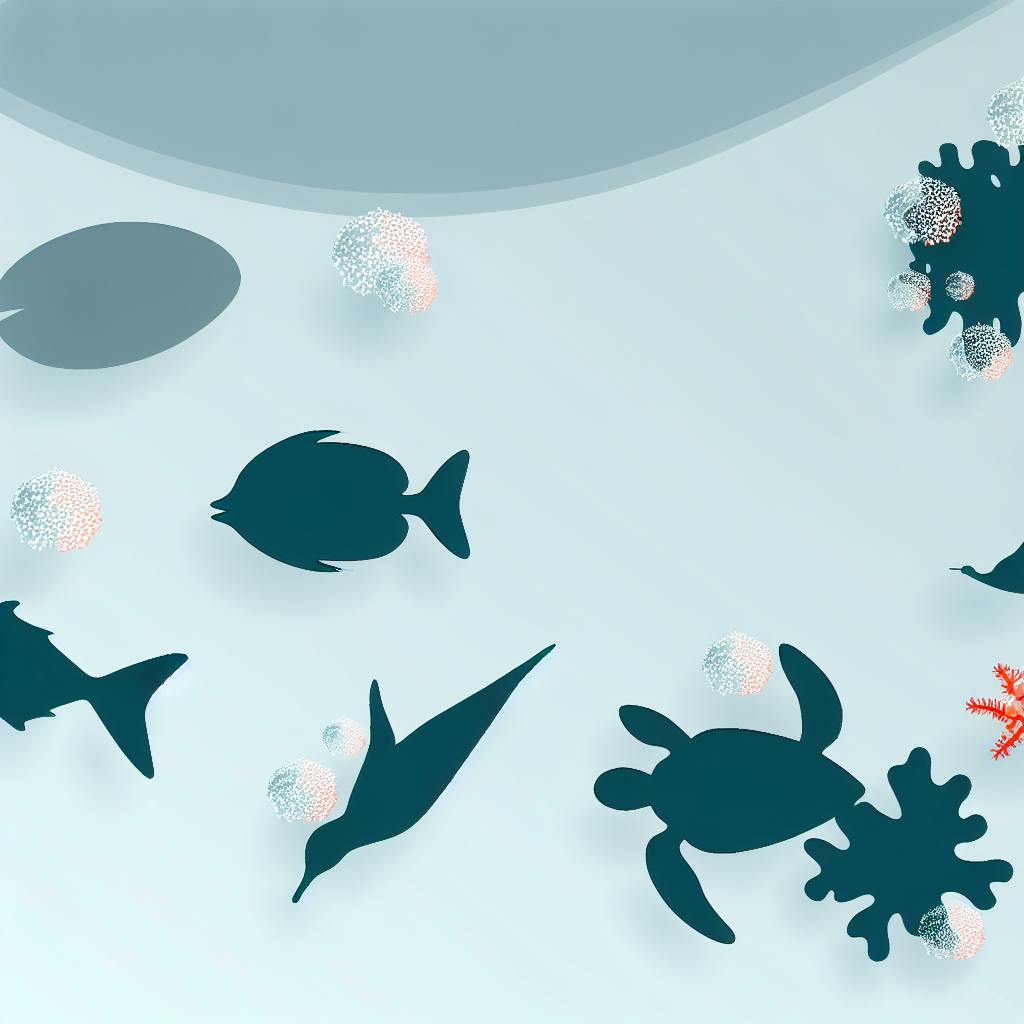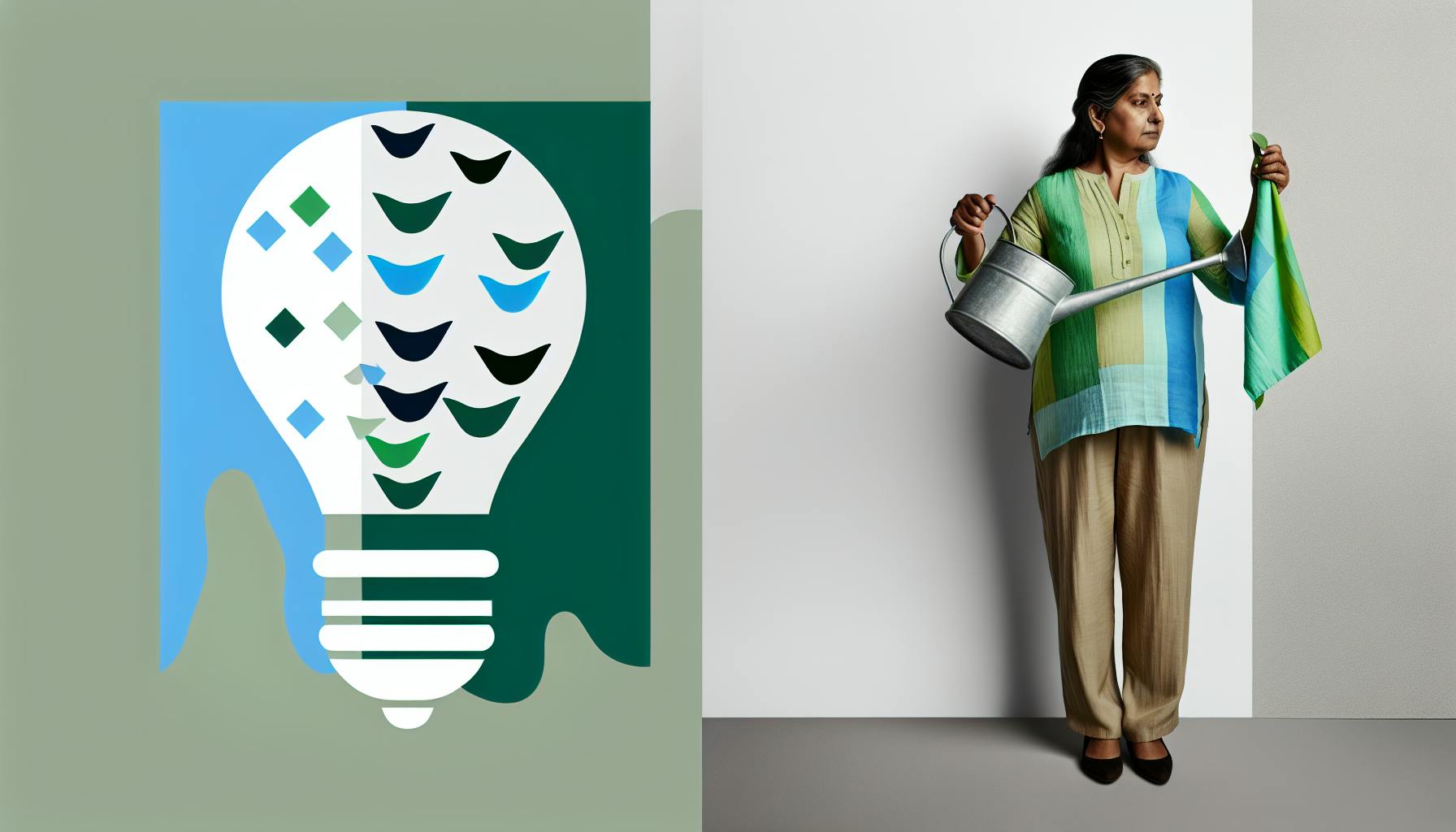Microplastics are tiny plastic particles smaller than 5mm that pollute our environment and food chain. Here's what you need to know:
- Microplastics are found in Tupperware and other plastic food containers
- They can leach into food, especially when heated or scratched
- Potential health risks include hormone disruption and inflammation
- To reduce exposure:
- Use glass, stainless steel, or ceramic containers instead of plastic
- Don't microwave food in plastic containers
- Replace damaged plastic containers
| Container Material | Microplastic Risk | Microwave Safe | Durability |
|---|---|---|---|
| Glass | Low | Yes | High |
| Stainless Steel | Low | No | High |
| Ceramic | Low | Yes | Medium |
| Plastic (Tupperware) | High | Not recommended | Medium |
While more research is needed on long-term health effects, reducing plastic use and choosing safer alternatives can help limit microplastic exposure from food containers.
Related video from YouTube
2. Microplastics explained
2.1 What are microplastics?
Microplastics are tiny plastic bits smaller than 5 millimeters (about the size of a pencil eraser). They're found everywhere, from oceans to mountains. Unlike natural materials, plastics don't fully break down. Instead, they split into smaller and smaller pieces.
2.2 Types of microplastics
There are two main types of microplastics:
| Type | Description | Examples |
|---|---|---|
| Primary | Made to be small | Microbeads in face scrubs, plastic pellets for making products |
| Secondary | From bigger plastics breaking down | Pieces from bottles, fibers from clothes |
2.3 Where do microplastics come from?
Microplastics come from many places:
- Face scrubs and toothpastes
- Clothes shedding fibers when washed
- Making plastic products
- Plastic packaging breaking down
- Car tires and road paint wearing out
- Big plastic trash breaking into smaller pieces
Since the 1950s, we've made about 8 billion tons of plastic. Only about 10% has been recycled. This means a lot of plastic ends up as tiny pieces in our world. We can find microplastics in:
- Household dust
- The air we breathe
- The food we eat
To fix this problem, we need to change how we use and throw away plastic. This includes how we act as buyers, how companies make things, and how we handle trash.
3. Microplastics in food containers
3.1 Are microplastics in Tupperware?
Studies show that microplastics can be in plastic food containers, including Tupperware. These tiny plastic bits (0.1 to 5000 µm) can get into our food and drinks.
Common plastics used in food containers:
| Plastic Type | Used For |
|---|---|
| PET | Water bottles, food packaging |
| HDPE | Milk jugs, shampoo bottles |
| LDPE | Plastic bags, squeeze bottles |
| PP | Tupperware, bottle caps |
| PVC | Food wraps, blister packs |
| PS | Disposable cups, food trays |
3.2 How microplastics get into containers
Microplastics enter food containers in these ways:
- Making: Small plastic bits can get into the container during production.
- Breaking down: Heat, light, and use can make plastic containers shed tiny pieces.
- Use: Regular washing and scratching can release microplastics.
- Heat: Microwaving can speed up the release of microplastics.
3.3 Research on microplastics in containers
Studies on microplastics in food containers show:
- Opening plastic containers can release microplastics (2020 study).
- Plastic water bottles can shed microplastics into water.
- New plastic food containers have about 12 mg (round) to 38 mg (rectangular) of microplastics.
To lower your contact with microplastics from food containers:
- Use "food-grade" or "BPA-free" containers
- Don't microwave food in plastic
- Check containers for damage and replace if needed
- Try glass or stainless steel containers
- Follow the maker's instructions for use and care
4. Health risks of microplastics
4.1 Possible health effects
Microplastics may harm human health. They can contain bad chemicals like:
- Cancer-causing agents
- Hormone disruptors
- Brain-damaging substances
- Chemicals that hurt reproduction
These might cause health problems:
| Body System | Possible Problem |
|---|---|
| Heart and blood vessels | Higher chance of heart attack and stroke |
| Reproductive organs | Trouble having babies |
| Digestive system | Upset stomach and changes in gut bacteria |
| Lungs | Breathing issues |
| Whole body | Long-term swelling and changes in how the body works |
4.2 What studies show
New research tells us:
1. Heart problems: People with microplastics in their arteries were 4.5 times more likely to have heart attacks, strokes, or die within 3 years.
2. How much we take in: We eat about 5 grams of plastic each week - that's like eating a credit card.
3. Where it goes: Scientists have found microplastics in people's lungs, spit, hair, and poop.
4. Carrying other bad stuff: Microplastics can bring harmful things like heavy metals and pesticides into our bodies.
4.3 What we still need to learn
We don't know everything about microplastics yet:
1. Long-term effects: We need to study what happens when people are around microplastics for many years.
2. How the body handles them: We're still figuring out how our bodies deal with microplastics.
3. How much is too much: We don't know exactly how many microplastics it takes to make someone sick.
4. Tiny plastics: We need to learn more about even smaller plastic bits called nanoplastics.
5. Working with other toxins: We're studying if microplastics team up with other pollutants to cause more harm.
Scientists are working hard to answer these questions. For now, it's smart to try to avoid microplastics when we can.
sbb-itb-1dc3f59
5. Microplastics and Tupperware
5.1 What studies have found
Recent research has looked at microplastics in food containers, including Tupperware. A study found:
| Container Type | Microplastics Found |
|---|---|
| Round | 12 mg per pack |
| Rectangular | 38 mg per pack |
| Disposable cups | 3 mg per pack |
These tiny plastic bits came in different shapes: cube, sphere, rod, and odd shapes. The study shows that new plastic containers can release a lot of microplastics.
5.2 How containers are made
The way plastic containers are made affects how many microplastics they release. Things that matter:
- How they're made
- What kind of plastic is used
- What's added to the plastic
- Container shape and thickness
Even containers marked "microwave safe" can release microplastics when heated.
5.3 Comparing different brands
While we don't have info on specific brands, here are tips for safer food storage:
| Better Choices | Things to Avoid |
|---|---|
| Glass containers | Microwaving in plastic |
| Stainless steel containers | Storing hot food in plastic |
| "Food-grade" or "BPA-free" plastic | Using damaged containers |
| Wooden cutting boards | Long-term storage in plastic |
When using plastic:
- Don't put hot, oily, or acidic foods in them
- Replace worn-out containers
- Think about how long you'll store food
6. How to reduce microplastic exposure
6.1 Other container options
To lower your contact with microplastics, try these instead of plastic:
| Material | Good points | Things to think about |
|---|---|---|
| Glass | Doesn't react, okay in microwave | Heavy, can break |
| Stainless steel | Strong, doesn't react | Not for microwave |
| Ceramic | Doesn't let stuff through, okay in oven | Can be heavy |
| Porcelain | Looks nice, okay in microwave | Costs more |
| Silicone | Bends, handles heat well | Might keep smells |
These choices are safer for keeping and heating food, and cut down on microplastic risk.
6.2 Using plastic containers safely
If you need to use plastic containers, follow these tips:
- Don't microwave food in plastic
- Don't put hot or sour foods in plastic
- Throw away old or damaged containers
- Wash plastic containers by hand
- Use cold water to clean plastic things
- Pick containers marked "microwave-safe" or "BPA-free" if you can
Remember, even "microwave-safe" plastic can let out microplastics when heated. It's best to put food in glass or ceramic before heating.
6.3 Choosing better containers
When picking food containers, think about:
| What to look for | Why it matters |
|---|---|
| Material | Glass, steel, or ceramic are best |
| Use | Pick containers that fit what you need (freezer, microwave) |
| Quality | Buy good containers that last longer |
| Size and shape | Choose containers that fit your food well |
| Lids | Look for tight lids not made of plastic (like bamboo or silicone) |
7. Fixing the bigger microplastic problem
7.1 Using less plastic
To cut down on microplastics, try these tips:
- Use containers and bags you can use again
- Buy things with less packaging
- Pick paper, glass, or metal instead of plastic
- Skip plastic straws and throw-away forks
- Get toilet paper wrapped in paper
- Clean with cloth rags, not paper towels
- Use cloth napkins instead of paper ones
7.2 New packaging materials
New ways to package things without plastic:
| Material | What it is | Why it's good |
|---|---|---|
| Plastics that break down | Made from plants | Go away on their own |
| Packaging you can eat | Food wraps you can eat | No waste left |
| Mushroom packaging | Made from mushroom parts | Breaks down, protects well |
| Plant-based packaging | Made from things like corn | Better for the earth |
| Beeswax wraps | Cloth with beeswax on it | Can use many times, breaks down |
These new materials help make less plastic waste.
7.3 How buyers can help
People who buy things can make a big difference:
- Buy from stores that use earth-friendly packaging
- Pick products with less packaging
- Bring your own bags and boxes when shopping
- Buy big amounts to use less packaging
- Tell companies what you think about their packaging
- Join in with local recycling efforts
- Learn about laws about throw-away plastics in your area
8. Wrap-up
8.1 Key points
- Microplastics are tiny plastic bits smaller than 5 mm
- They come from small plastic items and bigger plastics breaking down
- Scientists have found microplastics in sea life
- We're still learning how they affect animals and people
8.2 Why this matters
Knowing about microplastics helps us:
- Choose how we use and throw away plastic
- Help clean up our area
- Make less trash and reuse more things
- Back studies on plastic pollution
- Ask for better rules to protect nature
8.3 Safer food storage tips
| Material | Tips |
|---|---|
| Glass or steel | Use instead of plastic |
| Beeswax wraps | Good for covering food |
| Plastic | Don't heat in microwave or dishwasher |
| Takeout food | Move to glass or ceramic dishes right away |
More ways to cut down on plastic:
- Bring your own bags and boxes when shopping
- Pick items with less packaging
- Use cloth napkins and rags, not paper
Keep your home clean:
- Vacuum and dust often to remove tiny plastic bits
- Throw away plastic trash properly to keep it out of nature
FAQs
What is microplastic and why is it bad?
Microplastics are tiny plastic bits smaller than 5 mm. They're a problem because:
- Sea animals eat them, which can hurt their stomachs
- They can bring harmful chemicals into the food chain
- People might eat or drink them in food and water
We're still learning about how microplastics might affect our health over time.
Should I throw away my old Tupperware?
There's no set time to replace plastic containers, but it's good to get rid of them when they look worn out. Look for:
- Chips or cracks
- Stains or smells that won't go away
- Changes in color
To lower your contact with possible microplastics and bad chemicals, try these instead of plastic:
| Material | Why it's good |
|---|---|
| Glass | Doesn't mix with food |
| Stainless Steel | Lasts long, doesn't keep smells |
| Ceramic | Safe in microwaves, doesn't take on food flavors |
These choices are safer for storing food and can help cut down on plastic use.


